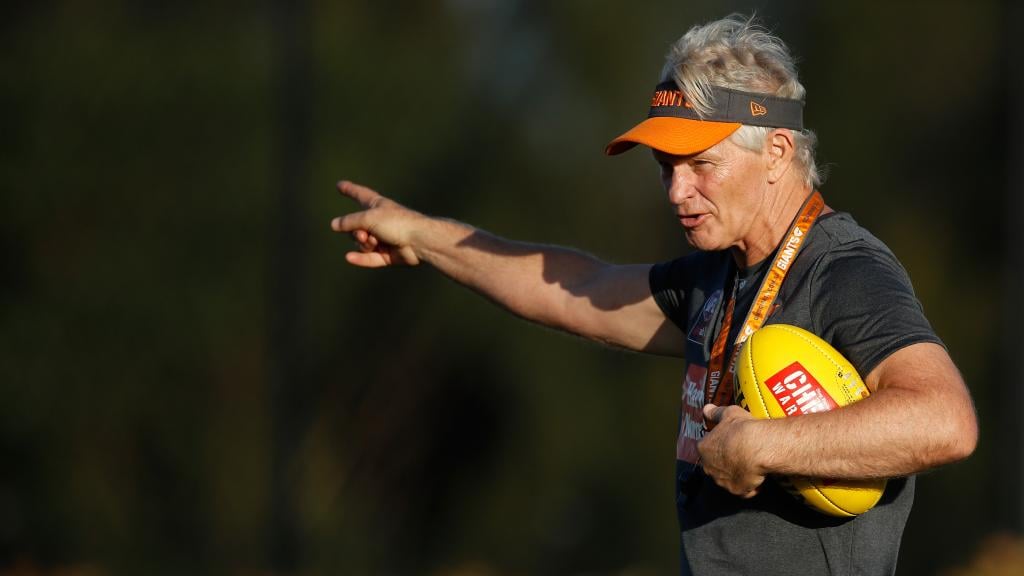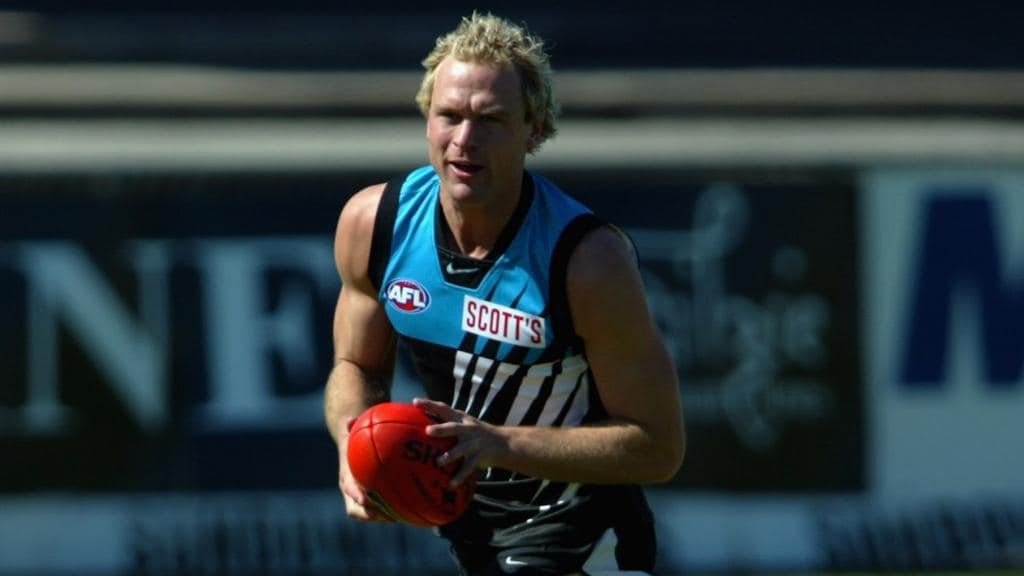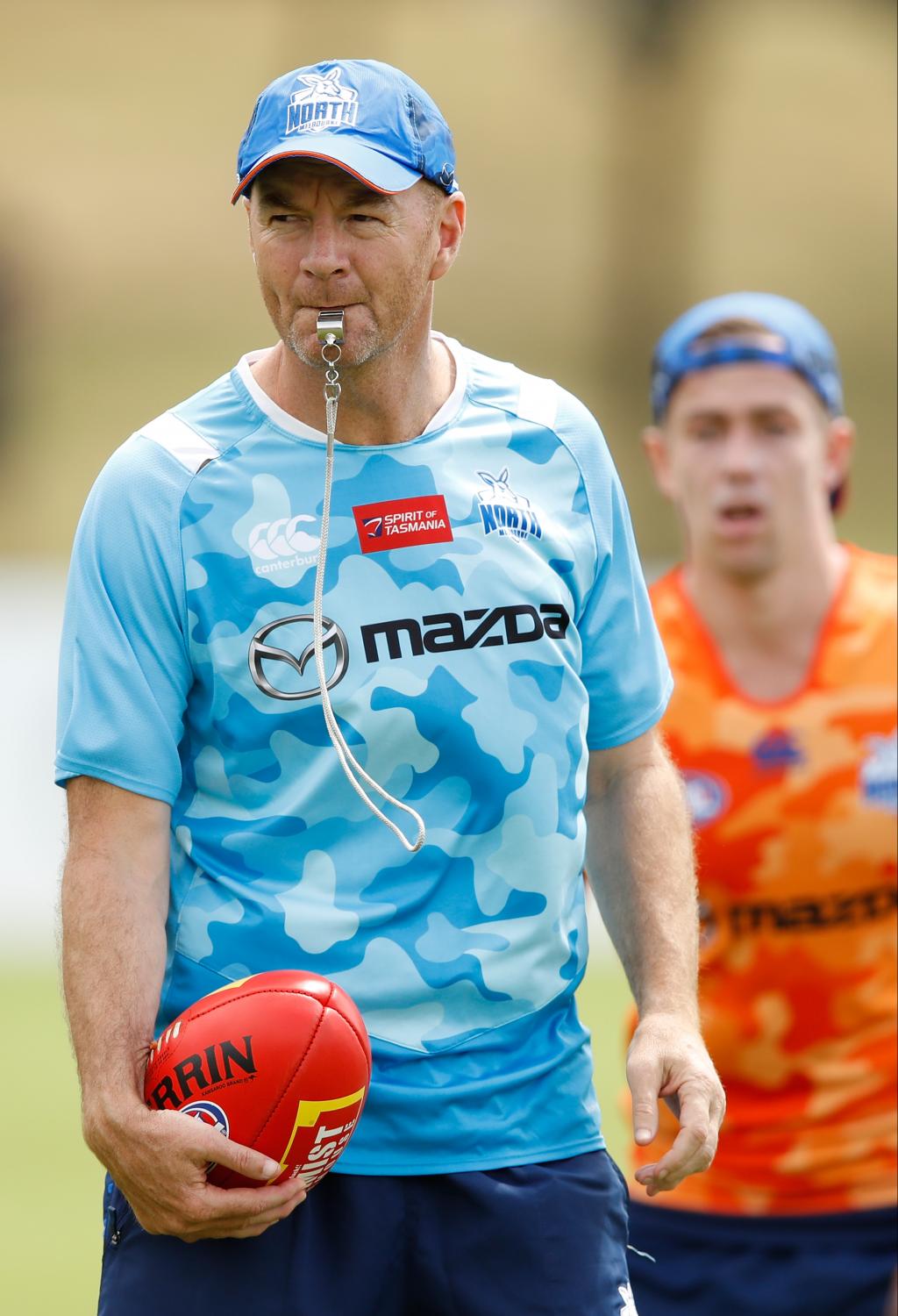WHEN it comes to pre-season training, we have come a long way from the days of the "no footys before Christmas".
Malcolm Blight tried to bring this edict back during his brief time as coach of St Kilda in 2001 but pretty much from the time the game moved towards full-time professionalism more than 20 years ago, the balls have been out from the first day of training.
What AFL coaches and their ever-expanding group of assistants need to grapple with this time every year is what to do when the balls come out. How do you strike the right balance between teaching and reinforcing, between skill acquisition and game plan development, and how much contact work is required at a time when the new season is still just a speck on the horizon?
"This is the best time of year to change things," Greater Western Sydney director of coaching Alan McConnell told AFL.com.au.
"Once the games start, it is very difficult to change too much because there is so much time devoted to recovery and preparing for the next game."
Since the end of last season, which in their case ended with a second straight preliminary final defeat, the Giants have identified an area of on-field improvement for every player and this is the time of year to work on it.
"We would have a craft session for every player on the list," McConnell explained. "The sessions involve small groups of players for whom the area for improvement might be similar and we do them multiple times."
Alan McConnell takes charge during a GWS training session. Picture: AFL Photos
Port Adelaide premiership coach Mark Williams can recall countless examples of the individual work put into targeting the deficiencies of players at this time of year, which then paid dividends when it really mattered, during the season.
"Chad Cornes and Daniel Motlop, as good as they were, could not kick on their left foot. One (Cornes) was a son of a star player and coach (Graham Cornes) and the other an all-time great when it came to freakish skills. But using the other side of their body was not part of their weaponry and as their coach I couldn't allow players like that to be one-sided.
"So, over the summer we worked on everything and they became efficient, if not brilliant at it. I remember Chad kicking a great left-foot goal one day then turning and waving to me. But as a coach, you're never satisfied."
It is an important time of the year for skill acquisition. Williams used to mark up footballs as a teaching aid for different types of kicks and has now turned that into a commercial proposition. He partnered with Sherrin (and with Dusty Martin helping with the spruiking) to create the Sherrin Precision, a ball with a larger sweet spot and various marked lines to help improve the art of kicking.
"Learning to be an expert kick takes a long time and if you start now, the better prepared you will be when the season starts," said Williams whose last full-time AFL role was as Richmond's head of development. "It's not just a ball for beginners. This ball helped the likes of (Richmond premiership players) Jason Castagna and Dan Butler get right up to AFL standard."
Chad Cornes couldn't kick on his left foot in the early part of his career. Picture: AFL Photos
Summer training is not just about skill acquisition. This is the time of year when steps are made by players to become truly elite by reinforcing their strengths. "We can't forget about what got them drafted into the AFL in the first place," said North Melbourne director of coaching Darren Crocker. "It's also the time to sharpen your best attributes. Work on your elite kicking skills or your contested marking if you're good at that."
At this time of year, the Kangaroos devote up to three and a half sessions a week to pure football training. "Monday, Wednesday and Friday, we get a lot of practice into them, whether it is skill development, game plan or decision making," added Crocker. "At other times of the year, having played a solid game on the weekend, there are only certain things you can do."
Introducing the game plan for the forthcoming season – whether a tweak on the season just gone, or a complete overhaul – is also a major consideration at this time of the year. This summer, Crocker said the Kangaroos are introducing elements of it every couple of weeks.
North's director of coaching Darren Crocker at training in November. Picture: AFL Photos
Up at the Giants, they're also tinkering. McConnell said that more extensive game plan education might take place at a club from the very start of pre-season training only if a new coach is taking charge.
Other clubs, such as Hawthorn, have been known to wait until the players are together for a lengthy and intense period of time, such as their annual pre-Christmas training camp, to introduce the new game plan for the season to come.
The sports scientists are ever present at footy clubs, but coaches suggest there might be less creative tension between them at this time of year. One coach suggested that Essendon's Joe Daniher might take 300 shots for goal at a specialist session at this time of year, whereas once the games start, he would be allowed "barely half that much" during the week.
And while the debut of AFLX next February is partly designed to show off a new version of the game suited for smaller, rectangular grounds in non-AFL markets, Williams said that for coaches at this time of the year, training is all about drilling the right decision-making into the players.
"This is the time to make hours and hours of good decisions and AFLX is an example of the types of little games coaches have designed over the years to teach good decision making."
AFL premierships aren't won at this time of the year, but there is an argument to suggest that they can be lost.
"You can't catch up," Williams said. "Your preparation, your efforts and your search for expertise and mastery… if you think you can start in March, you're no chance.
"If it gets to June and the season is slipping away, that's when you cast your mind back and ask yourself what it was you were doing the previous December."

